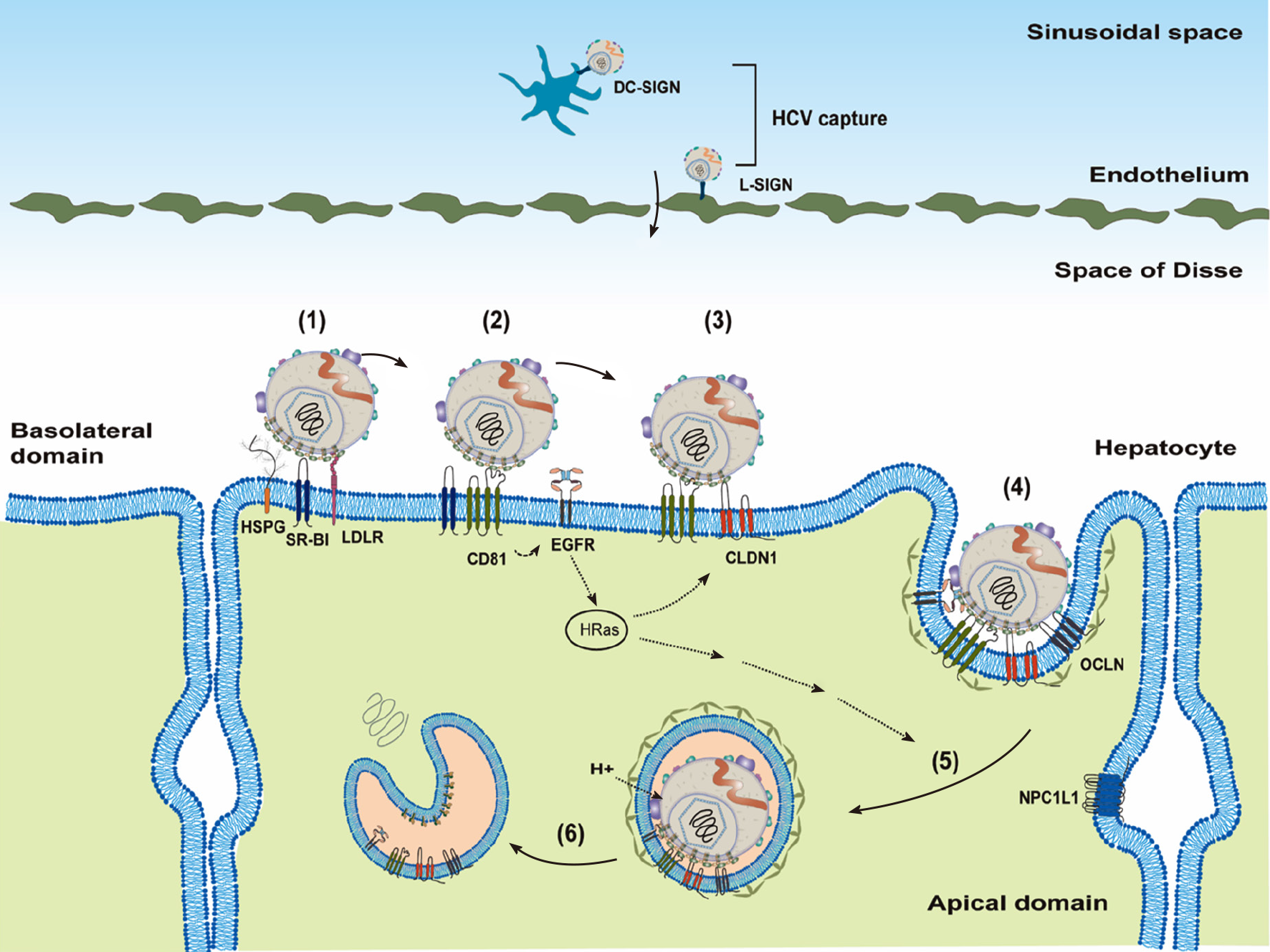Copyright
©The Author(s) 2021.
World J Gastroenterol. Jul 28, 2021; 27(28): 4555-4581
Published online Jul 28, 2021. doi: 10.3748/wjg.v27.i28.4555
Published online Jul 28, 2021. doi: 10.3748/wjg.v27.i28.4555
Figure 2 Model of cell-free virus entry into hepatocytes.
Hepatitis C virus (HCV) lipo-viral particles (LPVs) may be captured by DC-SIGN on the dendritic cells or L-SIGN on the endothelium in the sinusoidal space. After transfer to Space of Disse, HCV LPVs could attach to the hepatocytes through interacting with highly sulfated heparan sulfate proteoglycans, low-density lipoprotein receptor and scavenger receptor class B type 1 (1). This attachment allows the engagement of LPVs to cluster of differentiation 81 (CD81) and then induces the epidermal growth factor receptor receptor signaling (2). Lateral diffusion of the CD81–HCV complexes results in the association of CD81–HCV with Claudin-1 (3) and then OCLIN (4). Formation of the HCV–CD81–CLDN1–OCLIN complex allows viral particles internalized through clathrin-dependent endocytosis (5). Endosomal acidification induces the fusion of viral particles possibly through E1 and leads to the release of the viral genomic RNA into cytosol (6). HSPGs: Heparan sulfate proteoglycans; HCV: Hepatitis C virus; EGFR: Epidermal growth factor receptor; LDLR: Low-density lipoprotein receptor.
- Citation: Li HC, Yang CH, Lo SY. Cellular factors involved in the hepatitis C virus life cycle. World J Gastroenterol 2021; 27(28): 4555-4581
- URL: https://www.wjgnet.com/1007-9327/full/v27/i28/4555.htm
- DOI: https://dx.doi.org/10.3748/wjg.v27.i28.4555









